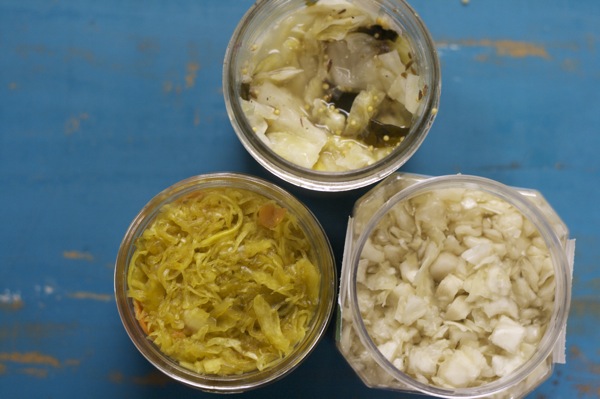Basic Small Batch Fermented Veggies
Mixed vegetables to tightly fill 2 quart mason jars, chopped, diced or grated
Seasonings of your choice (garlic, ginger, herbs, spices...)
2 T. coarse light grey Celtic sea salt
Combine all ingredients in a large bowl. Pound for several minutes
until vegetables start to release their juices. Pack into quart jars,
pounding as you go to pack as tightly as possible. When full, press
vegetables down below surface of the water. If there is not enough
liquid the next morning, add a bit of water to cover. Close and leave
on the counter 3 - 5 days. Taste, and when it tastes good to you, move
to the fridge. Will last (and evolve) in the fridge for a good long
while.


